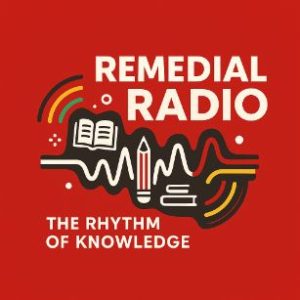Explore the components of schemes of work in CBC (Competency-Based Curriculum) and how teachers can effectively plan for learner-centered, skill-based education delivery.
📚 Introduction: What Is a Scheme of Work in CBC?
A scheme of work is a detailed plan that outlines what will be taught and how it will be delivered during a specific period, typically a term or semester. In a Competency-Based Curriculum (CBC), this document becomes even more essential as it reflects a shift from content-driven to competency-driven learning. It helps teachers translate curriculum designs into actionable classroom strategies.
Schemes of work guide teachers on how to address:
- Specific learning outcomes
- Relevant learner activities
- Appropriate teaching and learning materials
- Learner assessment methods
- Integration of core competencies, values, and pertinent contemporary issues (PCIs)
Let’s break down the components of a scheme of work in CBC and understand how each element supports quality teaching and holistic learning.
🧩 1. Grade/Level
This refers to the education level or class the scheme is prepared for, e.g., Grade 4, Grade 7, or Senior One (in Uganda). This ensures that the teacher is planning according to the developmental stage and needs of the learners.
📘 2. Subject
Clearly indicate the subject area, e.g., Science, Social Studies, Kiswahili, or Agriculture. CBC emphasizes interdisciplinary learning, so the subject should align with both standalone competencies and cross-cutting themes.
📆 3. Term and Year
This indicates the academic term (e.g., Term 1, Term 2) and the specific year the scheme will be used. It helps in tracking content progression and adjusting to curriculum updates.
🗓️ 4. Week and Lesson Allocation
Each scheme of work should be broken down into weekly segments. Under each week, indicate:
- The number of lessons per week
- Duration of each lesson (e.g., 40 minutes) This helps in effective time management and pacing of content delivery.
🎯 5. Strand and Sub-strand (or Topics and Subtopics)
Strands are broad content areas, while sub-strands are specific focus points within the strand.
For example:
- Strand: Nutrition
- Sub-strand: Balanced Diet
In other curricula, these may be labeled as topics and subtopics. This alignment helps ensure coverage of the curriculum design objectives.
📖 6. Specific Learning Outcomes (SLOs)
Learning outcomes describe what learners are expected to know, do, and value by the end of each sub-strand or topic.
They are derived directly from the official curriculum designs and are the foundation of the CBC model, which emphasizes:
- Knowledge
- Skills
- Attitudes and values
✅ Example:
“By the end of the lesson, the learner should be able to list five sources of proteins.”
🏃 7. Key Competencies Developed
CBC aims to nurture lifelong skills. Every lesson or sub-strand must indicate the key competencies being addressed, such as:
- Communication and collaboration
- Critical thinking and problem solving
- Self-efficacy
- Digital literacy
- Citizenship
- Learning to learn
- Creativity and imagination
This ensures that lessons go beyond knowledge transmission and prepare learners for real-life situations.
🧠 8. Suggested Learner Activities
This is one of the core CBC components. Here, the teacher outlines what learners will actively do to achieve the learning outcomes. CBC promotes hands-on, learner-centered, activity-based learning.
Examples of learner activities:
- Group discussions
- Role plays
- Fieldwork
- Model making
- Experiments
- Peer teaching
These activities promote engagement, creativity, and mastery of skills.
📦 9. Learning Resources / Teaching and Learning Materials (TLMs)
List the materials needed to support teaching and learning. These could include:
- Textbooks
- Charts and diagrams
- Realia (real-life objects)
- Audio-visual aids
- Digital tools
- Locally available materials
Teachers are encouraged to utilize locally available resources to make lessons relevant and practical.
🧪 10. Assessment Methods
Assessment in CBC is continuous and formative. Teachers assess progress, not just final results.
This section should indicate how the teacher will assess learning, including:
- Observation checklists
- Oral presentations
- Written exercises
- Portfolios
- Projects
- Self-assessment and peer assessment
Assessments help determine if the intended learning outcomes are being achieved.
💡 11. Link to PCIs (Pertinent and Contemporary Issues)
CBC strongly integrates real-life issues that affect learners and society. These include:
- Environmental conservation
- Peace and conflict resolution
- Drug abuse
- Gender equity
- HIV and AIDS education
- Technology and innovation
- Disaster preparedness
In every scheme, the teacher should align learning with at least one PCI to develop socially responsible and aware learners.
🧭 12. Values Promoted
CBC promotes ethical and moral development. Each sub-strand or topic should address at least one value such as:
- Responsibility
- Respect
- Integrity
- Love
- Unity
- Patriotism
This ensures that learners grow to become responsible citizens with strong moral character.
📌 13. Reflection Notes
Reflection is a new and essential feature in CBC schemes. After teaching each week, the teacher should record:
- What worked well?
- What challenges were encountered?
- What will be adjusted next time?
This practice encourages professional growth and learner-focused adjustments.
✅ Benefits of a Well-Developed CBC Scheme of Work
- Enhances structured lesson planning.
- Promotes inclusive and differentiated learning.
- Ensures coverage of all learning domains.
- Encourages continuous assessment.
- Supports collaboration among teachers across subjects and grades.
- Prepares learners for real-world competencies.
📝 Sample Scheme of Work Snippet for CBC
| Week | Strand | Sub-strand | Learning Outcome | Learner Activity | Assessment | Resources | Values/PCIs |
| 1 | Nutrition | Balanced diet | Identify components of a balanced diet | Role play, food chart | Observation, Q&A | Local foods, charts | Responsibility, healthy living |
🧠 Conclusion
Creating a comprehensive and well-structured scheme of work under CBC is essential for transforming education from a content-based approach to a competency-based approach. The components of the scheme work in harmony to ensure that learning is learner-centered, practical, values-based, and skill-oriented.
For teachers, a quality scheme of work is not just a curriculum requirement—it is a roadmap for success, guiding learners toward becoming empowered, competent individuals who can thrive in the 21st-century world.
❓ Frequently Asked Questions (FAQs)
1. What is the purpose of a scheme of work in CBC?
It helps teachers plan for effective delivery of CBC by outlining learning outcomes, activities, resources, and assessments aligned with competencies and values.
2. What are PCIs in CBC schemes?
PCIs (Pertinent and Contemporary Issues) are real-life topics integrated into learning to promote relevance and societal awareness.
3. Why is reflection included in a CBC scheme of work?
To help teachers evaluate their teaching strategies and improve learning experiences for students.
4. Is assessment still part of the scheme of work in CBC?
Yes. CBC emphasizes continuous assessment using tools like observations, portfolios, and project work.
5. How often should the scheme of work be updated?
It should be reviewed every term or whenever there are changes in curriculum, learner needs, or teaching strategies.


Leave a Reply